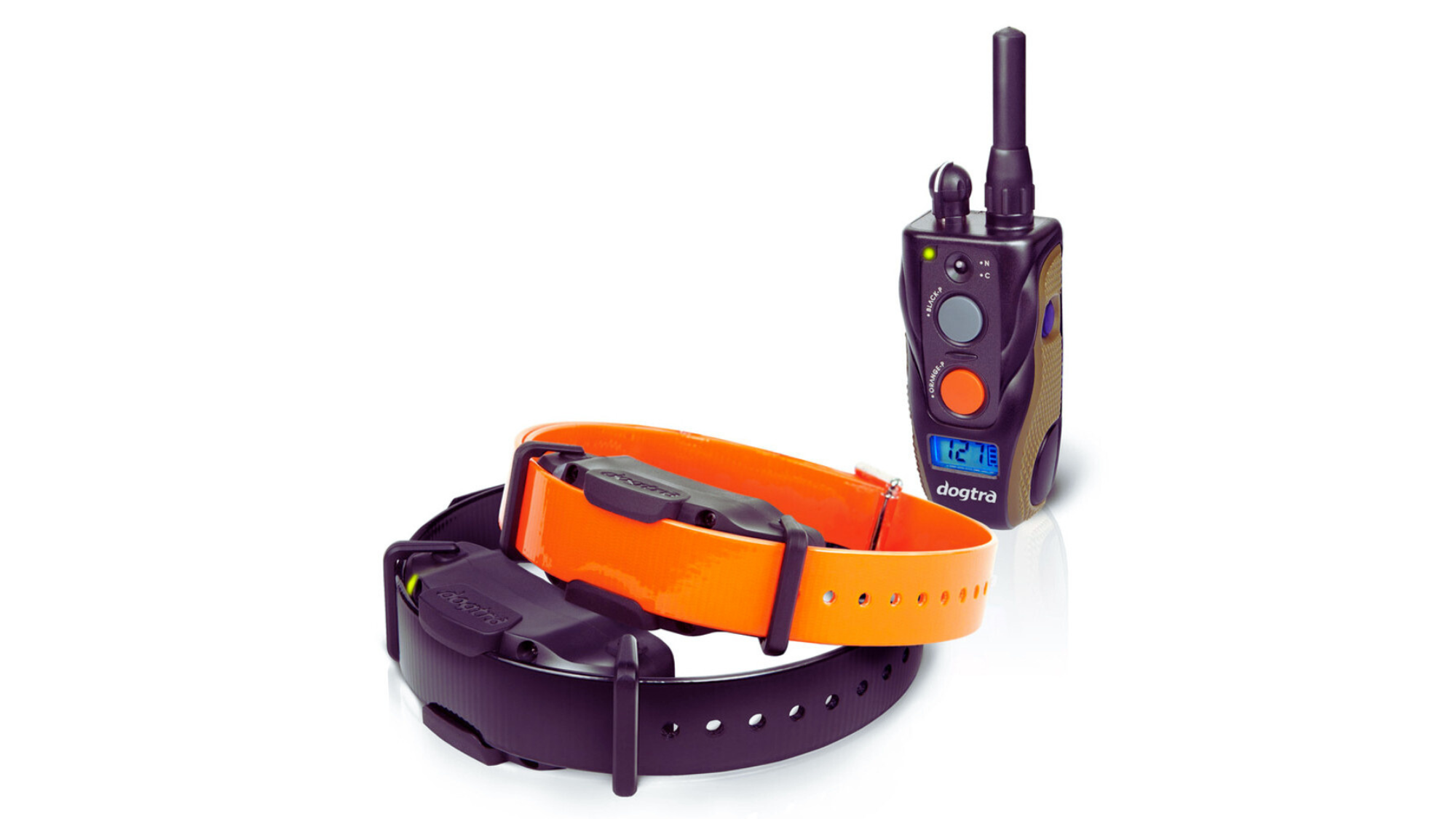| Summary: To use a Dogtra training collar effectively, start by properly fitting the collar to your dog’s neck, ensuring it’s snug but not too tight. Pair the collar with the transmitter, adjusting stimulation levels (0-127) based on your dog’s behavior. Use vibration or tone for gentle training, and momentary or continuous stimulation for correction. |
Dogtra training collars are widely used by professional trainers and pet owners for obedience training, off-leash control, and behavior correction. These collars offer adjustable stimulation levels, vibration, and tone modes, making them effective for a variety of training needs. So, how to use dogtra training collar?
For a comprehensive guide on what kind of harness is best for a Pomeranian, including comfort and safety tips, check out this article.
However, proper usage is essential to ensure that the collar is effective, humane, and safe for your dog. By following this guide, you’ll be able to use a Dogtra training collar correctly and efficiently while ensuring your dog’s safety and comfort.
Blog Highlights
ToggleWhat is a Dogtra Training Collar?
A Dogtra training collar is an advanced electronic dog training device designed to help pet owners, professional trainers, and hunters train their dogs effectively. These collars provide various stimulation modes, including static correction, vibration (pager), and tone, to reinforce obedience commands and correct unwanted behaviors.
Unlike traditional collars, Dogtra training collars offer customizable settings, waterproof durability, and long-range control, making them a versatile and humane training tool. Discover if the American Eskimo is a guard dog and learn about its suitability for protecting your home.
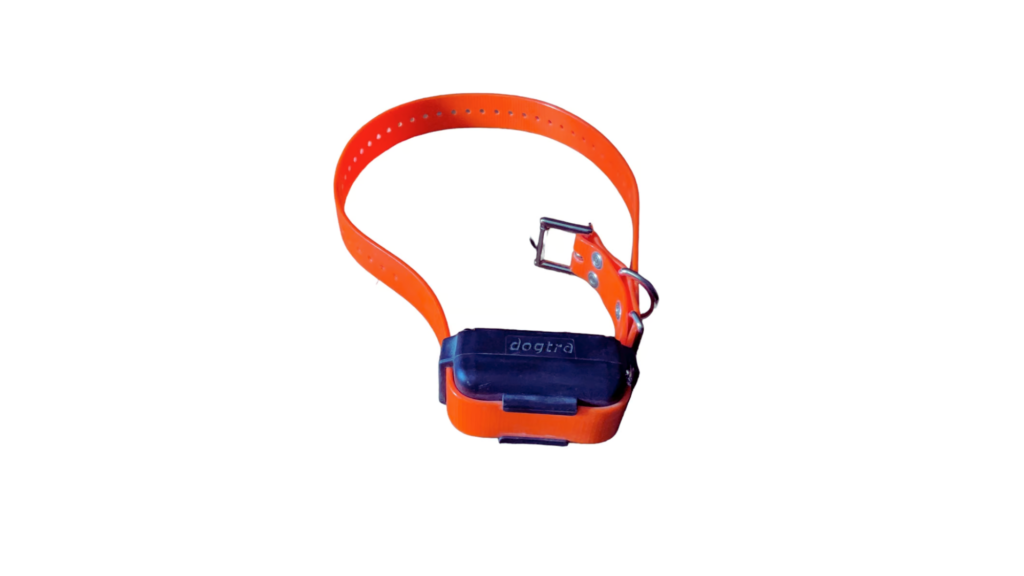
How Does a Dogtra Training Collar Work?
A Dogtra training collar consists of two main components:
- Receiver Collar – Worn by the dog, this collar delivers stimulation, vibration, or tone cues based on the trainer’s input.
- Handheld Transmitter – Used by the trainer to adjust settings and send signals to the collar remotely.
The trainer selects a stimulation level (ranging from 0 to 127 on most models) and presses a button to send a signal. This signal prompts the dog to respond appropriately, reinforcing commands such as sit, stay, come, and heel.
Key Features of Dogtra Training Collars
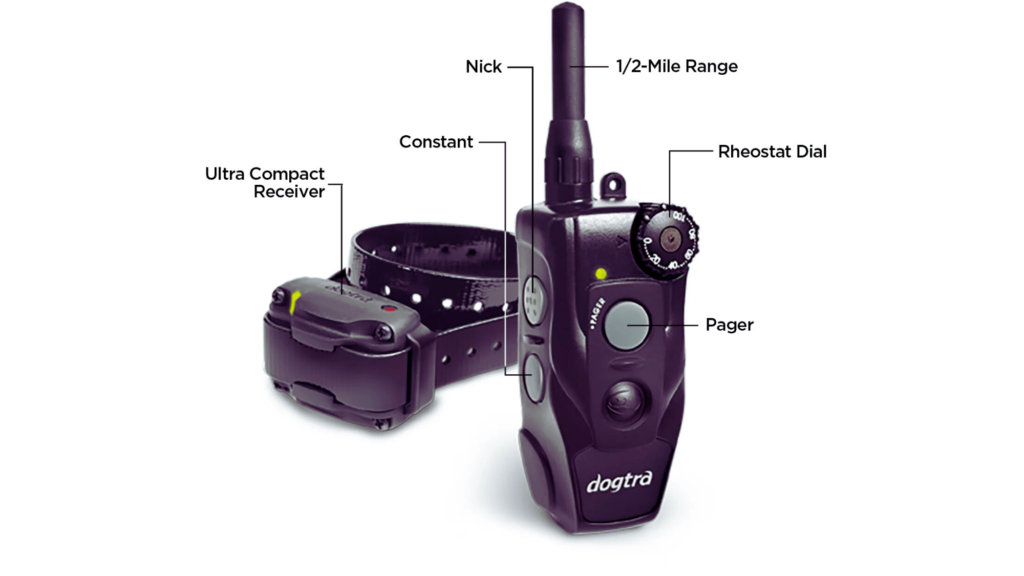
1. Adjustable Stimulation Levels
Most Dogtra collars offer 0 to 127 levels of static correction, allowing trainers to fine-tune the stimulation based on the dog’s sensitivity and training needs.
2. Vibration & Tone Modes
In addition to static correction, Dogtra collars feature vibration (pager mode) and tone signals for more gentle and humane training.
3. Long-Range Control
Depending on the model, Dogtra training collars provide a range of 400 yards to 9 miles, making them ideal for off-leash training, hunting, and fieldwork.
4. Waterproof & Durable Design
Many Dogtra models have an IPX9K waterproof rating, allowing them to be fully submerged in water without damage.
5. Rechargeable Batteries
Equipped with long-lasting lithium-ion batteries, Dogtra collars provide between 24 to 72 hours of use per charge, ensuring extended training sessions.
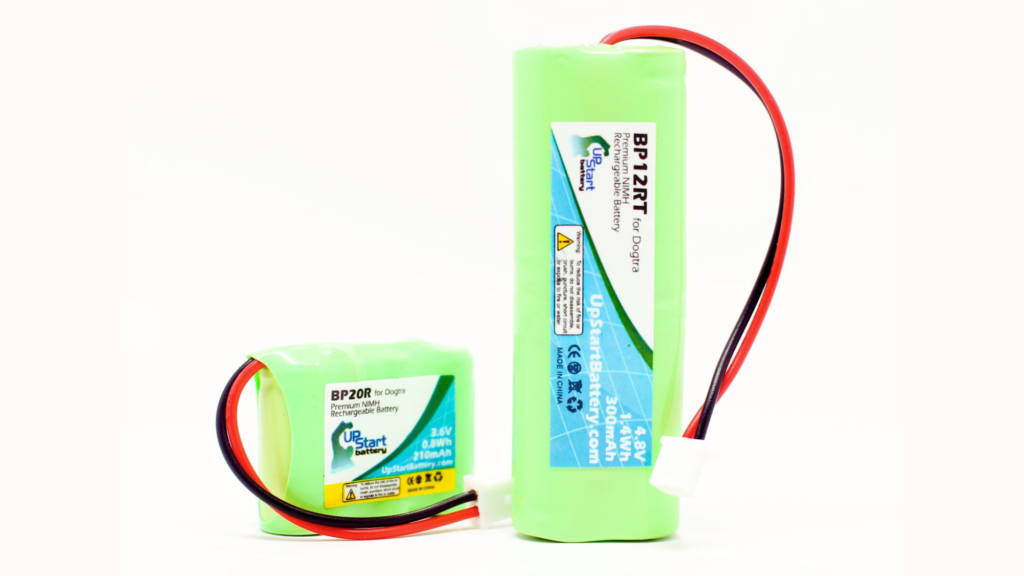
6. Multiple Dog Training Options
Select Dogtra models support training two or more dogs simultaneously, using a single transmitter. Learn about the size collar for an American Eskimo to ensure a perfect fit and comfort for your dog.
| Feature | Specification |
| Stimulation Levels | 0-127 |
| Range | 400 yards – 9 miles |
| Battery Life | 24-72 hours |
| Waterproof Rating | IPX9K (fully submersible) |
| Training Modes | Nick, Continuous, Vibration (Pager) |
Knowing these features will help you select the right training mode and intensity level for your dog.
Step 1: Properly Fitting the Dogtra Collar
Why Proper Fit Matters
So, how to use dogtra training collar? A poorly fitted collar can result in inconsistent correction signals or cause discomfort for your dog. Ensuring a proper fit is crucial for effective training.
How to Fit the Collar Correctly
- Position the Collar: Place the receiver just below your dog’s ears, on the side or front of the neck. Avoid positioning it on the throat.
- Ensure Contact with the Skin: The collar should be snug but not too tight—you should be able to fit two fingers between the collar and your dog’s neck.
- Check for Even Pressure: If your dog has thick fur, you may need to use longer contact points to ensure proper stimulation.
- Monitor for Skin Irritation: Remove the collar for a few hours each day to prevent pressure sores, especially for dogs wearing it long-term.
| Dog Size | Recommended Collar Model | Contact Points Needed |
| Small (<10 lbs) | Dogtra IQ Mini | Short Contact Points |
| Medium (10-40 lbs) | Dogtra ARC | Standard Contact Points |
| Large (40+ lbs) | Dogtra 1900S | Longer Contact Points |
Once the collar is properly fitted, you’re ready to start training.
Step 2: Understanding the Dogtra Transmitter
Dogtra transmitters vary slightly between models, but most have the following buttons and dials:
- Power Button: Turns the transmitter on and off.
- Stimulation Dial: Adjusts the intensity from 0 to 127.
- Nick (Momentary) Button: Delivers a quick, brief stimulation to get your dog’s attention.
- Continuous Button: Sends continuous stimulation for up to 12 seconds.
- Pager (Vibration) Button: Delivers a non-stimulating vibration cue.
How to Pair the Collar and Transmitter
- Turn on the Transmitter and Receiver Collar.
- Press and hold the pairing button on the receiver collar.
- Press the Nick and Continuous buttons simultaneously on the transmitter.
- Wait for the LED light to flash, indicating successful pairing.
Once paired, you can begin using the collar for training. Discover why Afghan Hound collars are wide by exploring the unique characteristics of this breed and how wide collars enhance their comfort and style.
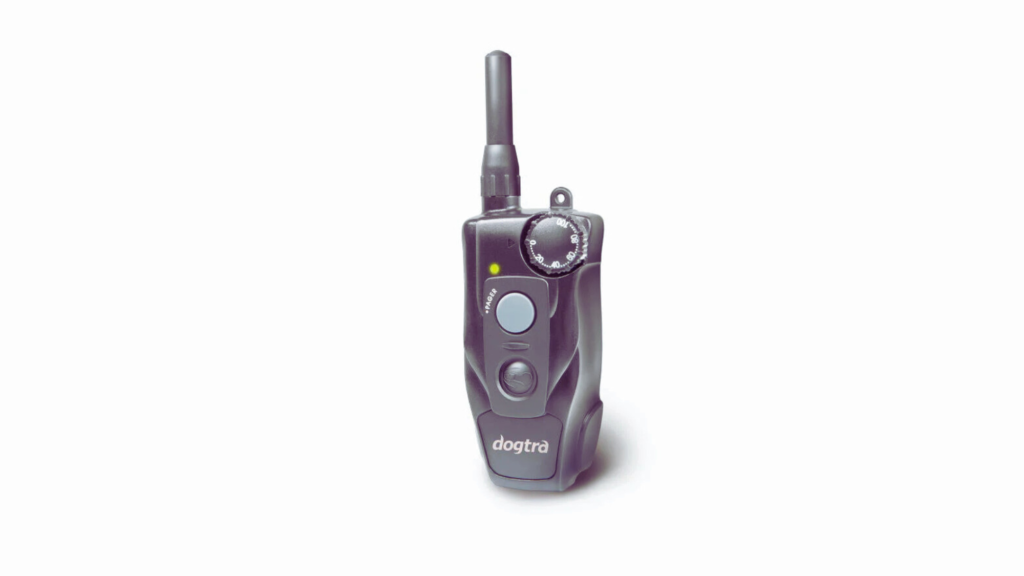
Step 3: Using the Dogtra Training Collar for Obedience Training
Basic Commands Training
Training should start with positive reinforcement techniques, incorporating vibration and low-level stimulation when necessary.
1. Teaching Recall (Come Command)
- Step 1: Place your dog on a long leash (15-30 feet).
- Step 2: Call your dog’s name and give the command “Come”.
- Step 3: If the dog does not respond, press the Pager (vibration) button as a cue.
- Step 4: If the dog ignores the vibration, increase stimulation slightly and press the Nick (momentary) button.
- Step 5: The moment your dog starts moving toward you, praise and reward with treats.
💡 Tip: Use stimulation only as a reinforcement, not as a punishment.
2. Correcting Unwanted Behaviors
If your dog engages in unwanted behaviors such as jumping, excessive barking, or digging, follow these steps:
- Step 1: Say “No” or “Leave it” firmly.
- Step 2: If the behavior continues, press the Nick (momentary) button at a low level (20-30).
- Step 3: If your dog does not respond, slightly increase the intensity and repeat.
- Step 4: The moment your dog stops the behavior, provide positive reinforcement (praise or treats).
Find out what style dog collar is best for hounds to ensure comfort and safety for your furry friend.
Step 4: Troubleshooting Common Dogtra Collar Issues
| Issue | Possible Cause | Solution |
| Collar not turning on | Battery drained | Recharge the collar |
| Weak stimulation | Poor skin contact | Adjust collar fit |
| No response from dog | Stimulation too low | Increase level gradually |
| Signal loss | Out of range | Stay within transmitter’s range |
| Collar beeping randomly | Interference or low battery | Check battery level and re-sync |
Step 5: Maintaining Your Dogtra Training Collar
To keep your collar working efficiently:
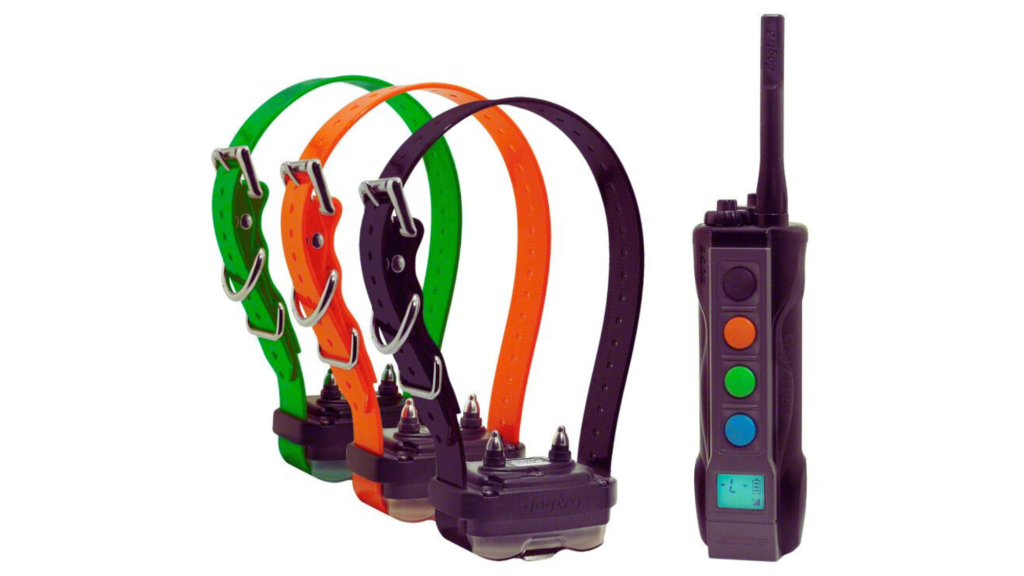
- Charge the battery regularly. Most Dogtra collars require 2-3 hours to fully charge.
- Clean the contact points weekly to prevent irritation or malfunction.
- Store the transmitter and collar properly. Avoid leaving them in extreme temperatures.
- Update firmware if needed for models with GPS or advanced features.
Final Thoughts: Is a Dogtra Training Collar Right for You?
Dogtra training collars are versatile, reliable, and designed for a variety of training purposes, from basic obedience to advanced fieldwork.
| Training Need | Recommended Dogtra Model |
| Basic obedience training | Dogtra IQ Plus |
| Off-leash training | Dogtra 1900S |
| Multi-dog training | Dogtra EDGE |
| GPS tracking & hunting | Dogtra PATHFINDER2 |
Using a Dogtra collar responsibly with clear training goals will ensure that your dog learns effectively while staying comfortable and stress-free. Hope so, now you know how to use dogtra training collar.
If you follow this guide, your Dogtra collar will become a valuable tool in strengthening the bond with your dog and achieving better training results. The ideal size collar for English Springer Spaniel typically ranges from 14 to 20 inches, depending on the dog’s age and neck size, ensuring a comfortable and secure fit.

